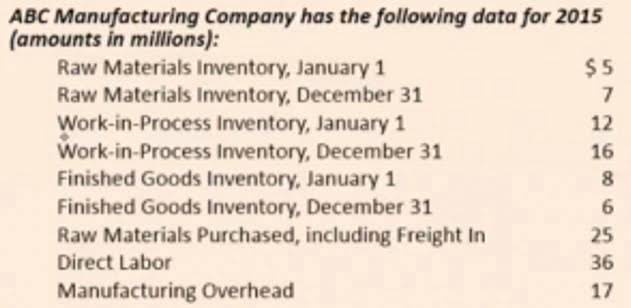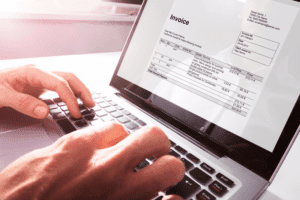
While all trade payables are part of accounts payable, not all accounts payable are trade payables. This means that all trade payables are accounts payable, but not all accounts payables are trade payables. While AP is the money a company owes to its vendors, accounts receivable is the money owed to the company by its customers. A well-managed trade payables strategy helps businesses allocate resources effectively, ensuring profitability without compromising vendor trust. Automation has transformed trade payable management, eliminating manual processes and reducing errors. Modern software solutions streamline invoice processing, payment approvals, and reconciliation, making AP teams more efficient.
Advanced Payables

Accounts payable is closely tied to cash flow management, as it determines the timing and amount of outgoing cash. Delaying payments can temporarily increase liquidity, but excessive delays may harm vendor relationships. Conversely, early payments can reduce liabilities but must be balanced against other financial priorities. Your trade receivable is the total amount receivable for the products or services that you provide. A low DPO indicates that a company is paying its bills to suppliers quickly, which may suggest that the company is managing its cash flow effectively.
When Cash is Received for Goods Sold on Credit
A business typically keeps close watch over its ability to meet the obligations represented by its payables. Otherwise, late payments or defaults can trigger a slide in a company’s credit rating, and could even lead to bankruptcy. The payables concept also applies to households, where examples of payables are mortgage invoices, doctor’s bills, and normal balance utility statements.
Difference Between Trade Receivables and Trade Payables
- HighRadius stands out as an IDC MarketScape Leader for AR Automation Software, serving both large and midsized businesses.
- An individual within the entity needs to spend some money for a particular purpose.
- Ensure that the bill includes vendor name, authorization, date, and verified and matching requirements to the purchase order.
- As a current liability, it reflects the amounts a company owes to vendors and suppliers for goods and services purchased on credit.
- It had an opening accounts payable balance of $500,000 and a closing accounts payable balance of $650,000.
- Further, it also ensures proper invoice tracking and avoiding duplicate payment.
This figure shows how often you pay a trade creditor in a given time period. The higher the ratios, the higher it trade payables is more favorable for the company. However, if the company needs more cash, it may approach the finance providers such as banks. When a business does an ordinary course of operations, it must purchase its primary inventory from external vendors to survive. When the inventory is delivered to the company, vendors send an invoice to the purchasing party to pay for the proceeds of the inventory.

Generally, a company acquires inventory, utilities, and other necessary services on credit. It results in accounts payable, a key accounting entry that represents a company’s obligation to pay off the short-term liabilities to its https://www.bookstime.com/ creditors or suppliers. DPO attempts to measure this average time cycle for outward payments and is calculated by taking the standard accounting figures into consideration over a specified period of time. Assuming an enterprise resource planning software, the entire process will be managed in the software through the accounts payable module.

Current liabilities are those liabilities which are to be settled within one financial year. Noncurrent liabilities are those liabilities which are not likely to be settled within one financial year. However, other payables would be placed under footnotes to financial statements.
Payment
- In countries where cheques payment are common nearly all companies have a junior employee process and print a cheque and a senior employee review and sign the cheque.
- When a company’s DPO is high, this may either mean the company is struggling to pay bills on time or is effectively using credit terms.
- That is, trades payable is the amount for which you bill your suppliers for those goods or services that you use for the ordinary course of business.
- Further, the clerk undertakes the processing, verifying, and reconciling the invoices.
- One employee may have one way of doing things, while another may do the same tasks differently.
- For instance, a logistics company using a cloud-based accounts payable system can track payments across multiple locations, ensuring consistency and compliance.
It also supports understanding of working capital management and how efficient supplier payments strengthen a firm’s creditworthiness. We know that trade payables and receivables are a significant part of a company’s current liabilities. This regular tracking and recording of trade payables ensure accurate financial reporting, which is essential for internal analysis, external audits and compliance with financial regulations. Monitoring trade payables and receivables helps you optimize cash flow effectively. By keeping track of when payments are due, you can efficiently plan outflows, ensuring you have enough liquid cash to meet real-time, short-term financial obligations, like payroll and rent. At this point, the goods or services have been provided and from an audit perspective the expenditure has been incurred and therefore should be recognised.

Trade payables vs non-trade payables
- However, it is also important to extend trade credit in the form of accounts receivable to sell goods to your customers.
- Trade payables constitute the money a company owes its vendors for inventory-related goods, such as business supplies or materials that are part of the inventory.
- This ratio is vital for students and business owners to evaluate company liquidity and supplier trustworthiness.
- However, accounts payable are payments you owe for any goods or services provided by a vendor.
- Concrete guidelines are essential because of the value and volume of transactions during any period.
Properly managing trade payables helps companies maintain liquidity, avoid late fees, and strengthen supplier relationships. Accounts payable is the money owed to your creditors for purchases already made or received. Trade payable refers to money owed to your suppliers for goods purchased on credit which are directly involved in the supply chain.
Purchase Order Finance
For the past 52 years, Harold Averkamp (CPA, MBA) hasworked as an accounting supervisor, manager, consultant, university instructor, and innovator in teaching accounting online. For the past 52 years, Harold Averkamp (CPA, MBA) has worked as an accounting supervisor, manager, consultant, university instructor, and innovator in teaching accounting online. All liabilities relating to the subject of the business fall under this category.
